Key Points:
- Brown water snakes are found in three states along the the Appalachian Trail: North Carolina, Virginia, and Georgia.
- Timber rattlesnakes, which are commonly found on the Appalachian Trail in Georgia, have enough venom to kill a human.
- Black rat snakes are found along the Appalachian Trail in Georgia, and they are not venomous but like to mimic a rattlesnake to intimidate predators.
The Appalachian Trail is one of the longest hiking trails in the world. Just like Mountain Everest and the Yarlung Tsangpo Grand Canyon, the trail attracts a lot of tourists. According to the Appalachian Trail Organization, more than 3 million people visit the trail each year.

Mount Chocorua was named by the Appalachian Trail Conservancy as one of the world’s most photographed mountains.
©Thomas J. McLaughlin/Shutterstock.com
The trail is known to run through 14 states! It begins at Springer Mountain, Georgia, and ends at Mount Katahdin, Maine. The Appalachian Trail is home to various snake species, six of which are venomous. Below are 12 snakes you can find on the Appalachian Trail.
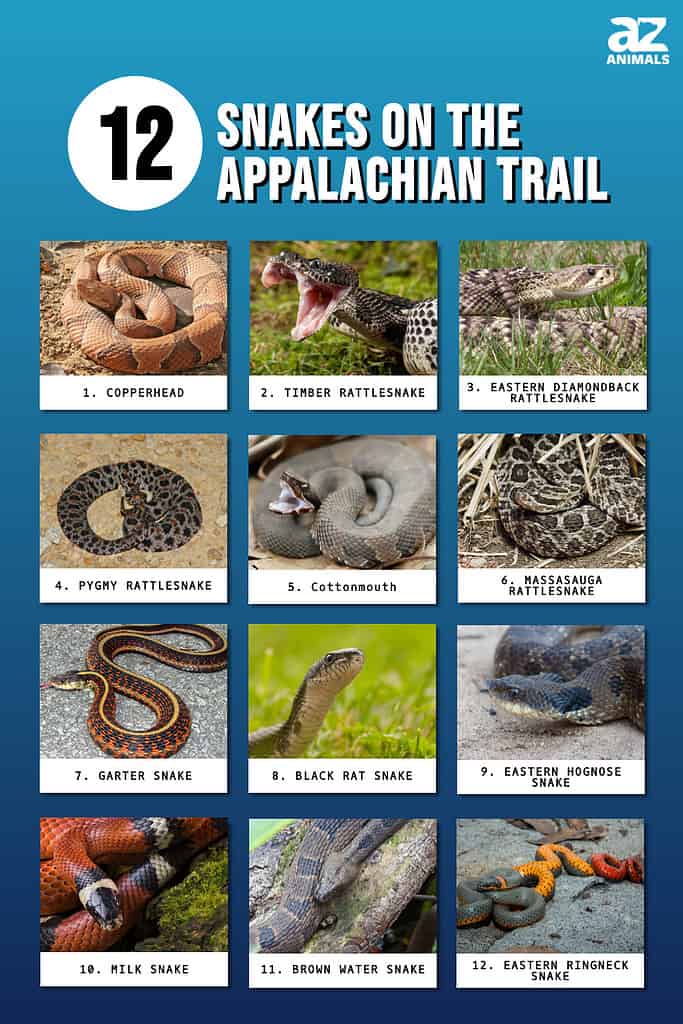
1. Copperhead

Copperheads are most active around late afternoons and evenings.
©Creeping Things/Shutterstock.com
Copperheads are medium-sized pit vipers found along the Appalachian Trail in Georgia. They have hemolytic venom that works to break down blood cells. However, copperhead bites are hardly ever fatal to humans.
They are known as one of the least dangerous pit vipers, although their bite is still an emergency as tens of people have lost their lives to it. Copperheads are more active around late afternoons and evenings, so be sure to watch out for them as they are found in a variety of habitats.
2. Timber Rattlesnake
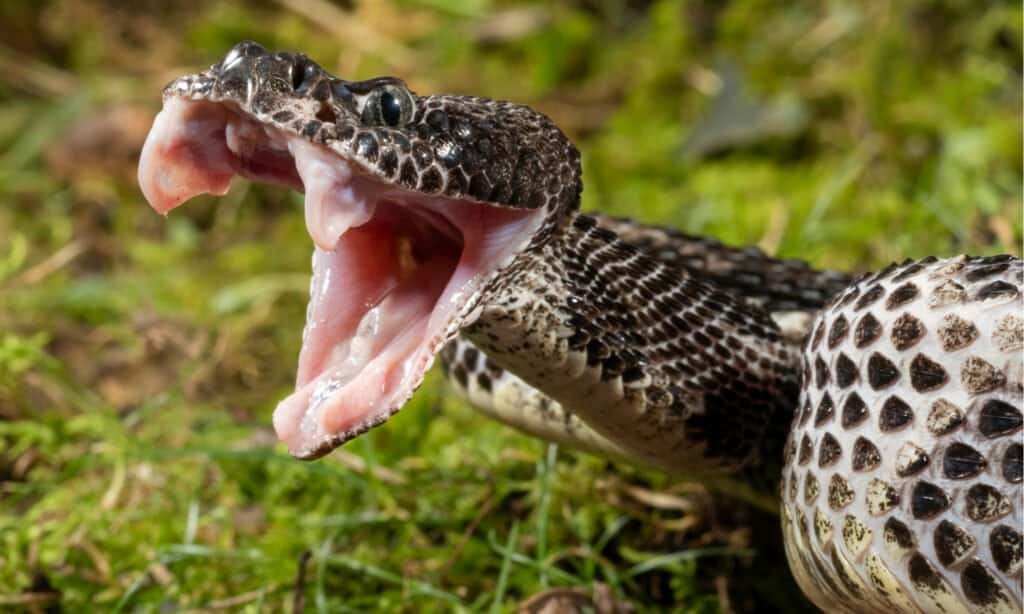
Timber rattlesnakes, known for their potent venom, are found along the Appalachian Trail in Georgia.
©Joe McDonald/Shutterstock.com
Known as one of the most venomous rattlesnakes, the timber rattlesnake isn’t one you’d want to encounter. This snake has solenoglyphous fangs and high venom yields. Timber rattlesnakes have venom that is strong enough to kill a human. Although they aren’t quick to strike, they can and will if they feel threatened. Like copperheads, they are commonly found along the Appalachian Trail in Georgia.
3. Eastern Diamondback Rattlesnake
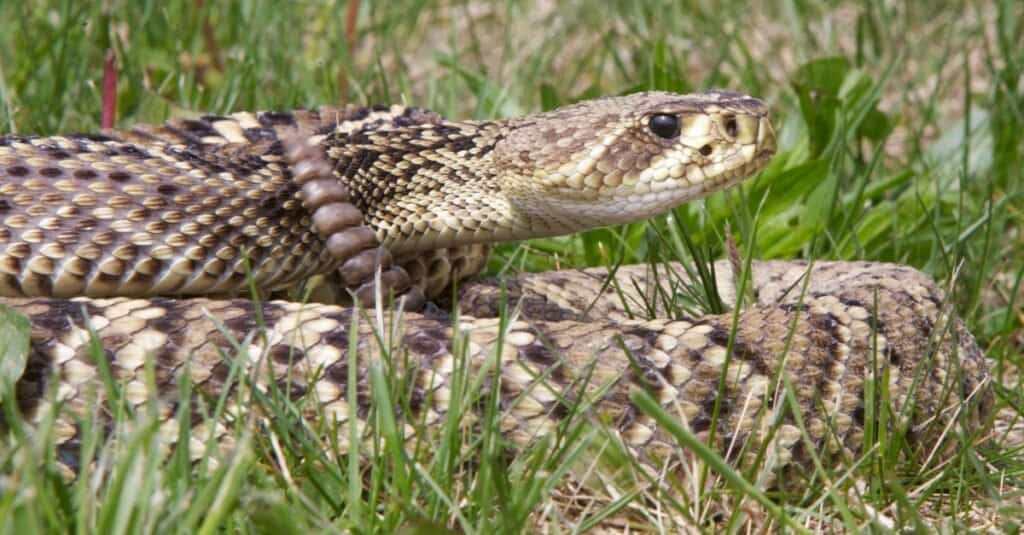
Eastern diamondback rattlesnakes are the largest
rattlesnake
species.
©iStock.com/NajaShots
Eastern diamondback rattlesnakes are the largest rattlesnake species known for their extremely toxic and dangerous venom and immensely painful bites. Their venom contains hemotoxins, which damage tissues and kill red blood cells. They have blackish-gray to muddy gray and even olive-green coloring.
This coloring makes it easy for them to camouflage and blend in with their surroundings. Eastern diamondback rattlesnakes are found along the trail in Georgia and North Carolina. These snakes do not like coming in contact with humans and bite when they feel threatened or attacked.
4. Pygmy Rattlesnake
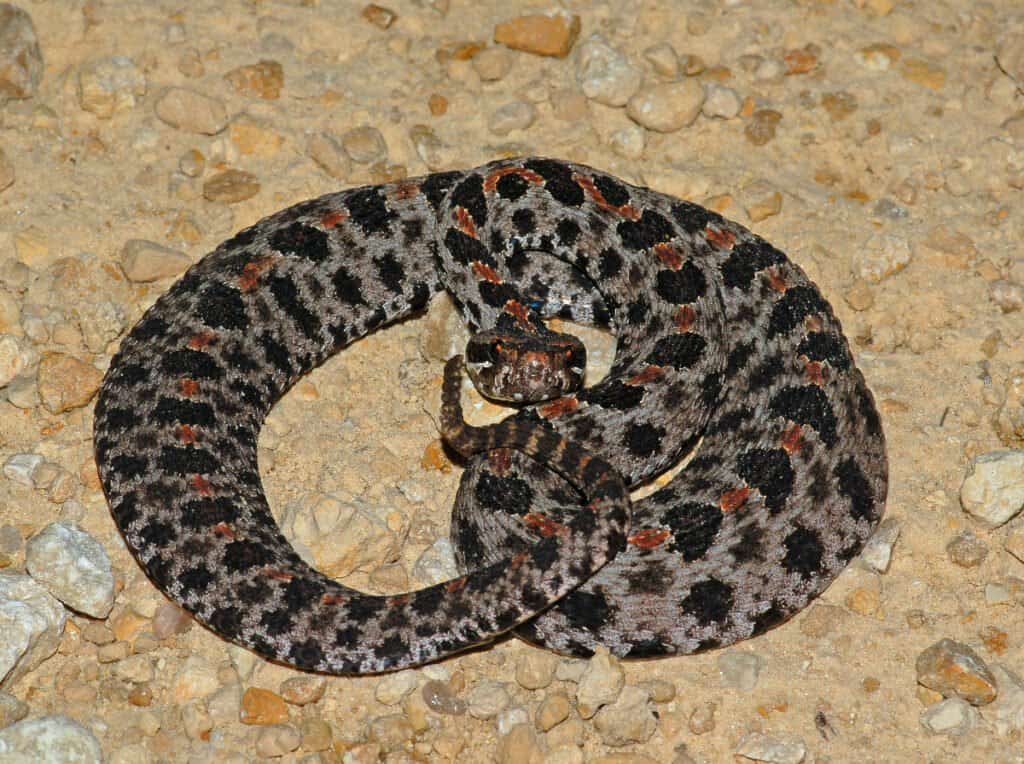
The pygmy rattlesnake, the smallest venomous snake, can be identified by dark markings that run through each eye.
©Gerald A. DeBoer/Shutterstock.com
Pygmy rattlesnakes are known as the smallest venomous snake species. They are known for their thick bodies, dark coloring, and painful bites. They are commonly found on the Appalachian Trail in Virginia and prey on small mammals, lizards, and smaller snakes.
Pygmy rattlesnakes can easily be identified by their dark markings that run through each eye. They also have circular spots that run down their backs. Usually, their scales are dark gray to black with orange or red dorsal stripes. If you’re hiking along the trail in Virginia, listen for a soft buzzing sound that pygmy rattlesnakes usually make.
5. Cottonmouth
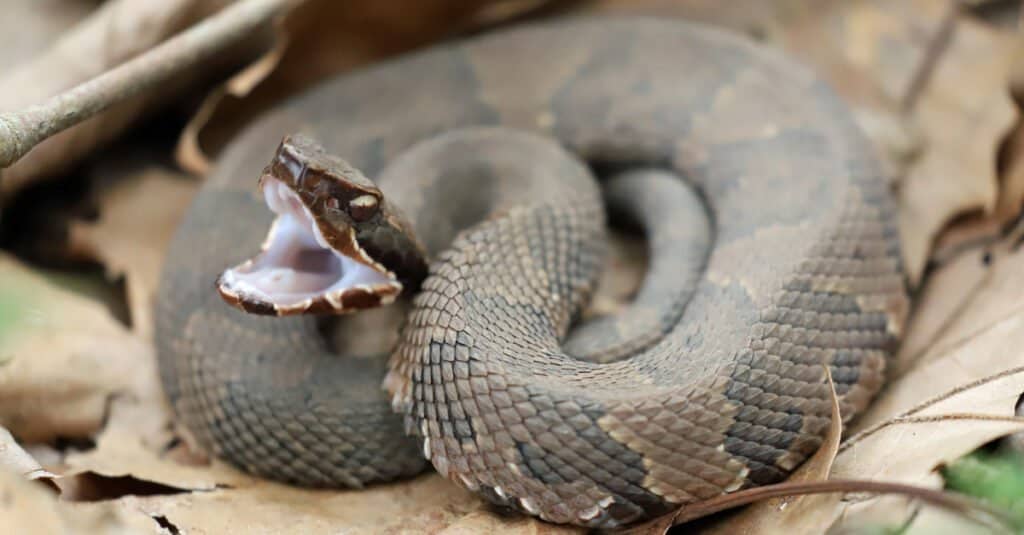
Cottonmouths are pit vipers found along the Appalachian Trail in Virginia.
©KF2017/Shutterstock.com
Also known as water moccasins, their venom is notoriously strong enough to kill two humans. Cottonmouths are pit vipers in the Viperidae family. They measure between 24 to 72 inches and are commonly found along the Appalachian Trail in Virginia. Adult cottonmouth snakes are usually dark or black colored with crossbands across their length.
6. Massasauga Rattlesnake
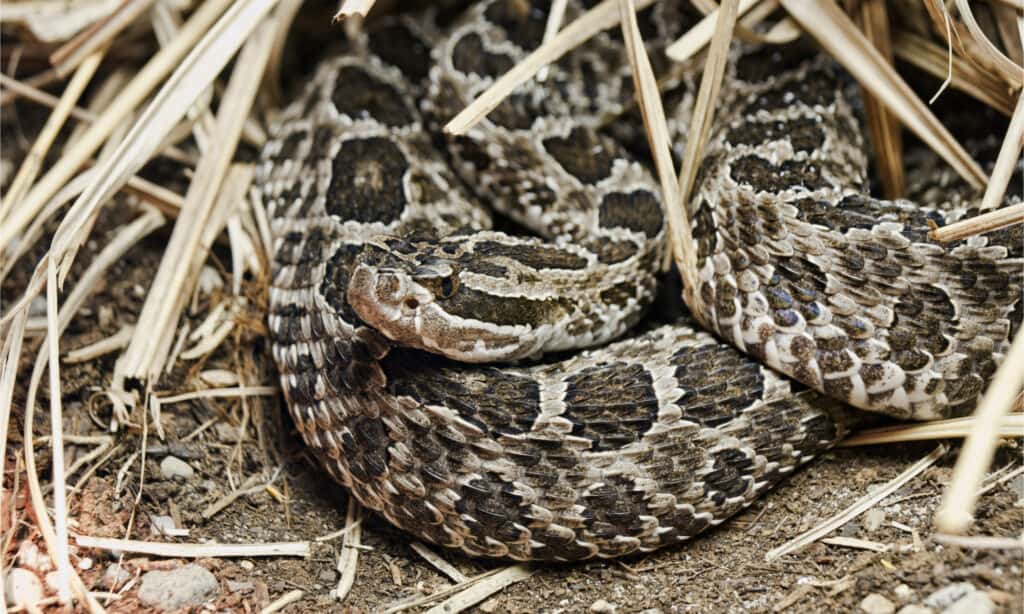
Unlike other rattlesnake species, Massasauga rattlesnakes do not rattle their tails to ward off humans or threats.
©DnDavis/Shutterstock.com
Massasauga rattlesnakes are found along the Appalachian Trail in Pennsylvania and New York. These rattlesnakes take great care not to be spotted and do not rattle their tails at all if they suspect that a human is nearby. The species is endangered and is thought to be one of the least venomous rattlesnakes. Massasauga rattlesnakes are mostly dark, gray, or light brown with dark blotches as well as white spots all over their sides and back.
7. Garter Snake

The mildly venomous garter snake is the official snake of Virginia.
©Matt Jeppson/Shutterstock.com
Garter snakes are mildly venomous snakes found along the Appalachian Trail in Virginia. They are also the state’s official snake. Initially, it was believed that garter snakes were nonvenomous snakes. However, in 2005, Bryan Fry, a biologist from the University of Melbourne discovered that this was wrong. According to the New York Times, Fry explained that the misconception was based on the fact that garter snakes do not have or need a lot of venom. Garter snakes are considered harmless because of their calm natures as well as their mild venom.
8. Black Rat Snake
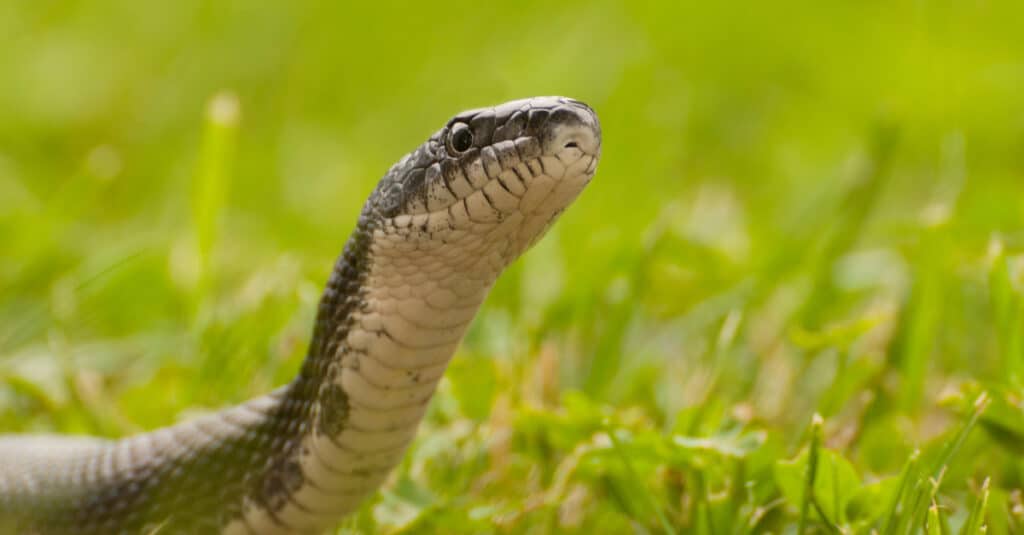
Black rat snakes, found along the Appalachian Trail in Georgia, vibrate their tails to appear like venomous rattlesnakes.
©Nancy Bauer/Shutterstock.com
Black rat snakes, also known as the western rat snakes, are found along the Appalachian Trail in Georgia. They are long snakes that weigh an average of 3 pounds and grow to up to 75 inches. Their entire bodies are black with irregular patterns from their head to their tails, while their bellies are either yellowish-white or cream with dark markings. Black rat snakes are known to vibrate their tails so they look like venomous rattlesnakes and scare off predators. However, they are neither venomous nor aggressive.
9. Eastern Hognose Snake
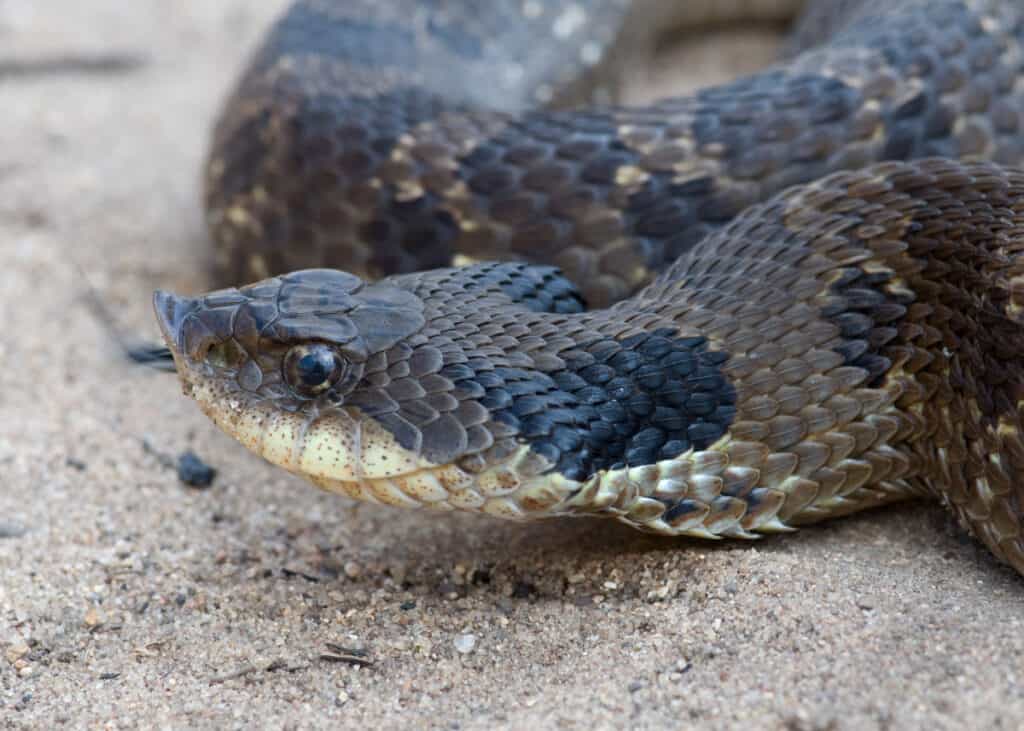
One of the Eastern hognose snake’s most distinctive features is its snout-like upturned nose.
©Gerald A. DeBoer/Shutterstock.com
Eastern hognose snakes are nonvenomous snakes commonly found in New Hampshire’s extreme south. They come in varying attractive colors such as orange, gray, and brown. Sometimes, they even mix all three. One of their most distinctive features is their snout-like upturned nose. Eastern hognose snakes often play dead by going completely limp and even letting their tongues hang from their open mouths.
10. Milk Snake
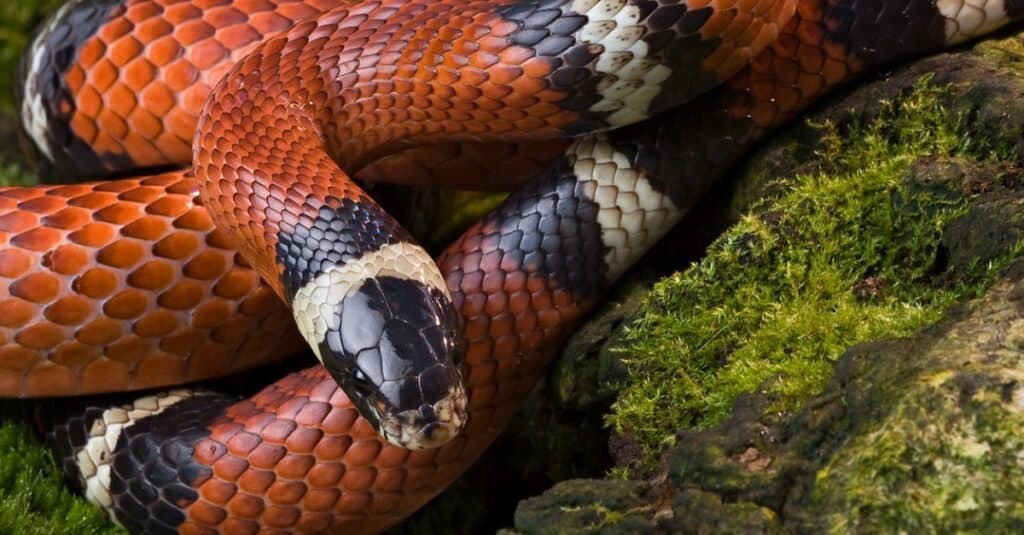
Milk snakes are a nonvenomous species of kingsnakes found along the Appalachian Trail in Maine and Georgia.
©iStock.com/wScottLoy
Milk snakes are a nonvenomous species of kingsnakes that are brightly colored like venomous snakes such as the copperhead or coral snake. They are often colored white, red, or black and have bands similar to copperheads and coral snakes. Milk snakes are very commonly found across Northern America and can be found along the trail in Maine and Georgia.
11. Brown Water Snake
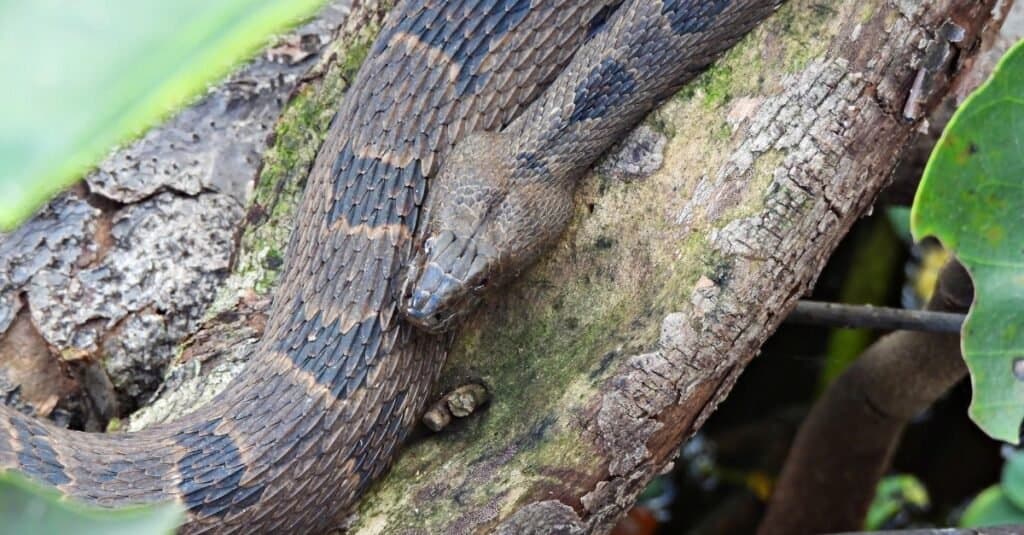
As brown water snakes are found in three states along the Appalachian Trail, there’s a high chance of seeing one if hiking.
©iStock.com/passion4nature
If you’re hiking the Appalachian Trail, there’s a pretty large chance that you’ll see at least one brown water snake. Brown water snakes are nonvenomous snakes found along the trail in North Carolina, Virginia, and Georgia. They are an abundant and heavy-bodied species with necks that are thinner than their heads. They are yellow-colored and have dark markings and dorsal scales.
12. Eastern Ringneck Snake
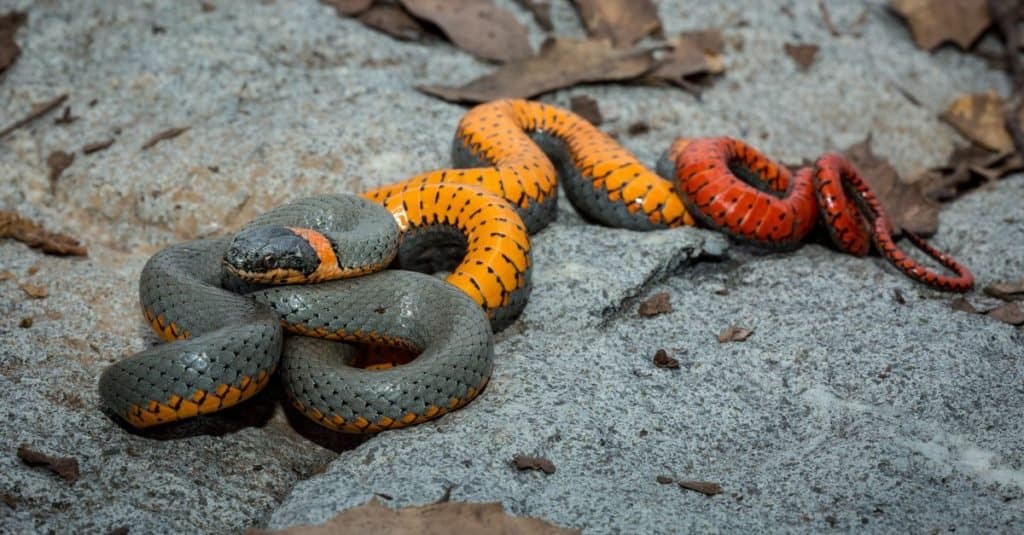
Ringneck snakes will play dead when threatened.
©Michael K. McDermott/Shutterstock.com
Eastern ringneck snakes are colubrid snakes with venom that is only effective on their prey. They have a wide range of colors and can be olive, smoky-black, brown, and even bluish-gray. Typically, they are 10- 15 inches long and often have a neckband-colored yellow, yellowish-orange, or red. Eastern ringneck snakes are found along the Appalachian Trail in North Carolina and Georgia.
Summary of 12 Snakes on the Appalachian Trail
Here’s a recap of the dozen snakes found on the Appalachian Trail that we took a look at:
| Number | Snake | Type | Range on the Trail |
|---|---|---|---|
| 1 | Copperhead | Venomous | Georgia |
| 2 | Timber Rattlesnake | Venomous | Georgia |
| 3 | Eastern Diamondback Rattlesnake | Venomous | Georgia, North Carolina |
| 4 | Pygmy Rattlesnake | Venomous | Virginia |
| 5 | Cottonmouth | Venomous | Virginia |
| 6 | Massasauga Rattlesnake | Venomous | Pennsylvania, New York |
| 7 | Garter Snake | Mildly venomous | Virginia |
| 8 | Black Rat Snake | Nonvenomous | Georgia |
| 9 | Eastern Hognose Snake | Nonvenomous | New Hampshire |
| 10 | Milk Snake | Nonvenomous | Maine, Georgia |
| 11 | Brown Water Snake | Nonvenomous | North Carolina, Virginia, Georgia |
| 12 | Eastern Ringneck Snake | Mildly venomous | North Carolina, Georgia |
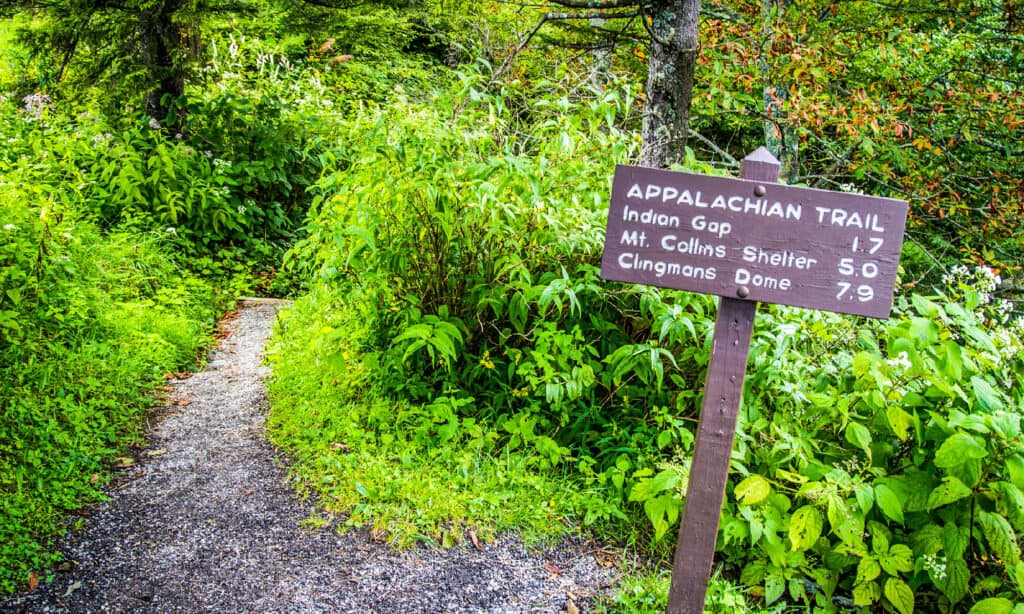
Snakes like the shade of leaves and rocks, so hikers on the Appalachian Trail must watch their step.
©iStock.com/ehrlif
The photo featured at the top of this post is © Chase D'animulls/Shutterstock.com
Discover the "Monster" Snake 5X Bigger than an Anaconda
Every day A-Z Animals sends out some of the most incredible facts in the world from our free newsletter. Want to discover the 10 most beautiful snakes in the world, a "snake island" where you're never more than 3 feet from danger, or a "monster" snake 5X larger than an anaconda? Then sign up right now and you'll start receiving our daily newsletter absolutely free.
Thank you for reading! Have some feedback for us? Contact the AZ Animals editorial team.






